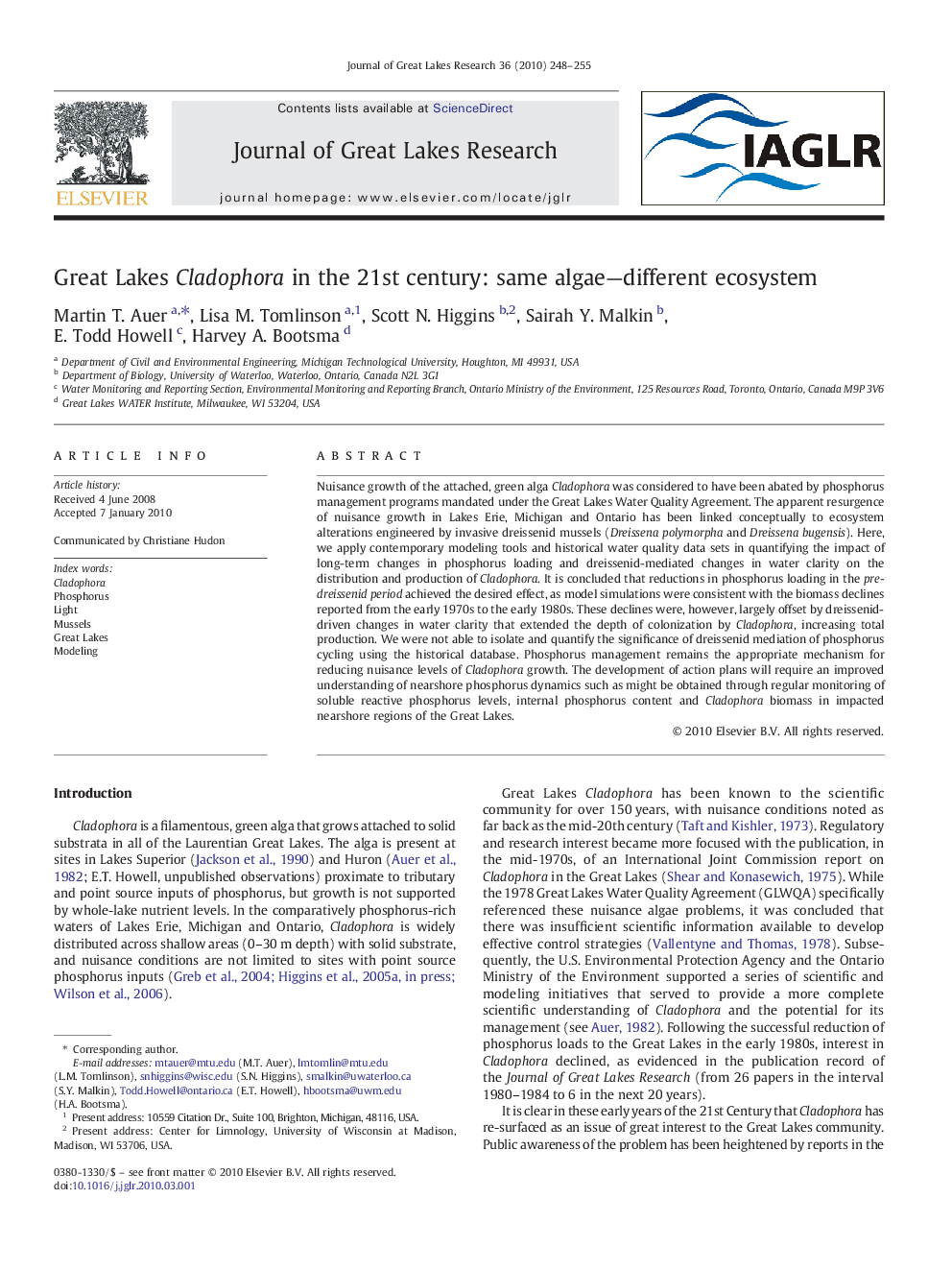| Article ID | Journal | Published Year | Pages | File Type |
|---|---|---|---|---|
| 4399196 | Journal of Great Lakes Research | 2010 | 8 Pages |
Abstract
Nuisance growth of the attached, green alga Cladophora was considered to have been abated by phosphorus management programs mandated under the Great Lakes Water Quality Agreement. The apparent resurgence of nuisance growth in Lakes Erie, Michigan and Ontario has been linked conceptually to ecosystem alterations engineered by invasive dreissenid mussels (Dreissena polymorpha and Dreissena bugensis). Here, we apply contemporary modeling tools and historical water quality data sets in quantifying the impact of long-term changes in phosphorus loading and dreissenid-mediated changes in water clarity on the distribution and production of Cladophora. It is concluded that reductions in phosphorus loading in the pre-dreissenid period achieved the desired effect, as model simulations were consistent with the biomass declines reported from the early 1970s to the early 1980s. These declines were, however, largely offset by dreissenid-driven changes in water clarity that extended the depth of colonization by Cladophora, increasing total production. We were not able to isolate and quantify the significance of dreissenid mediation of phosphorus cycling using the historical database. Phosphorus management remains the appropriate mechanism for reducing nuisance levels of Cladophora growth. The development of action plans will require an improved understanding of nearshore phosphorus dynamics such as might be obtained through regular monitoring of soluble reactive phosphorus levels, internal phosphorus content and Cladophora biomass in impacted nearshore regions of the Great Lakes.
Related Topics
Physical Sciences and Engineering
Earth and Planetary Sciences
Earth and Planetary Sciences (General)
Authors
Martin T. Auer, Lisa M. Tomlinson, Scott N. Higgins, Sairah Y. Malkin, E. Todd Howell, Harvey A. Bootsma,
